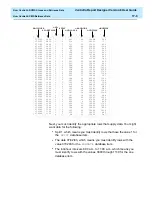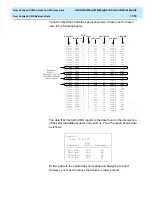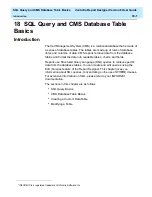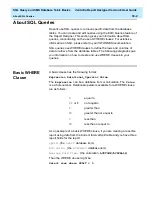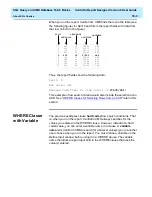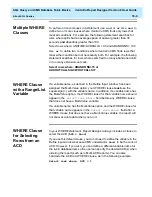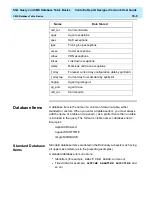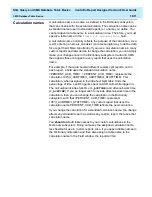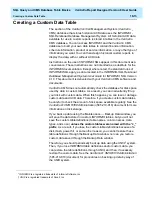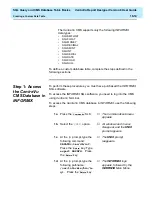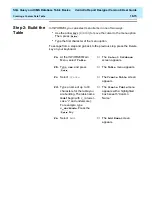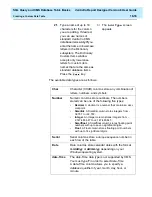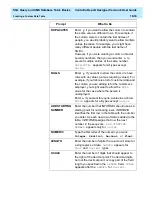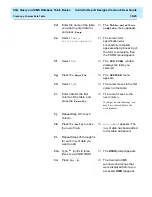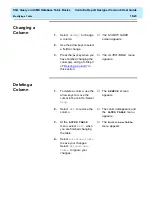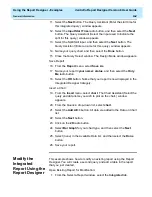
SQL Query and CMS Database Table Basics
CentreVu Report Designer Version 8 User Guide
Creating a Custom Data Table
18-13
Creating a Custom Data Table
18
The section of the
CentreVu
Call Management System (
CentreVu
CMS) database that stores historical ACD data uses the
INFORMIX
*
-
SQL Relational Database Management System. All historical ACD data
available for use in custom reports is stored in tables in the
CentreVu
CMS database. You can access
INFORMIX and the CentreVu CMS
database to build your own data tables to contain financial information,
schedule information, product or service information, or any other type of
information you want. You can then design historical custom reports to
display the data, with or without ACD data.
Instructions on the use of
INFORMIX SQL appear in this document as a
convenience. These instructions are not intended as a substitute for the
INFORMIX documentation. Except where noted, the standard rules of
INFORMIX SQL apply, as documented in the INFORMIX-SQL Relational
Database Management System User Guide for INFORMIX SQL Version
4.10. This document is delivered with your
CentreVu CMS software and
documents.
CentreVu CMS does not automatically check the database for disk space
used by data in custom tables. As a result, you can inadvertently fill up
your disk with custom data. When this happens, you can lose or damage
custom data and ACD data. Therefore, if you create custom data tables,
be careful to check the amount of disk space available regularly. See the
CentreVu® CMS R3V8 Administration (585-210-910) document for more
information on disk storage.
If you back up data using the Maintenance — Backup Data window, you
will save the data stored in custom
INFORMIX tables, but you will not
save the custom table definitions (table names, column names, data
types, and so on) unless the custom tables were named with the “c_”
prefix. As a result, if you lose the custom table definitions because of a
disk crash, power hit, or some other reason, you cannot restore these
table definitions through the Backup Data window nor can you restore
custom data saved through the Backup Data window.
Therefore, you should periodically back up data using the
UNIX
†
system.
Then, if you lose
INFORMIX table definitions and/or custom data, you
can restore the table definitions through
UNIX, and then, if necessary,
restore the custom data. See the
CentreVu® CMS R3V8 Administration
(585-210-810) document for procedures on backing up data by way of
the
UNIX system.
* INFORMIX is a registered trademark of Informix Software, Inc.
† UNIX is a registered trademark of Novell, Inc.
Содержание CentreVu Report Designer
Страница 1: ...CentreVu Report Designer Version 8 User Guide 585 210 930 Comcode 108502196 Issue 1 December 1999...
Страница 4: ......
Страница 18: ...Introduction CentreVu Report Designer Version 8 User Guide Related Documents 1 8...
Страница 102: ...Edit Inputs CentreVu Report Designer Version 8 User Guide Viewing the Input Window 6 16...
Страница 142: ...Insert Field CentreVu Report Designer Version 8 User Guide Inserting Time Report Run Field on the Report 9 8...
Страница 148: ...Insert Table CentreVu Report Designer Version 8 User Guide Inserting a Table on the Report 10 6...
Страница 194: ...Format Field CentreVu Report Designer Version 8 User Guide Using the Field Format Options Window 14 6...
Страница 198: ...Format Text CentreVu Report Designer Version 8 User Guide Formatting Text on the Report 15 4...
Страница 212: ...Error Messages CentreVu Report Designer Version 8 User Guide Phase 2 Real Time Report Error Codes 16 14...
Страница 248: ...SQL Query and CMS Database Table Basics CentreVu Report Designer Version 8 User Guide Modifying a Table 18 26...
Страница 254: ...Database Items and Calculations CentreVu Report Designer Version 8 User Guide General Information B 2...
Страница 264: ...Index CentreVu CMS R3V8 Upgrades and Migration IN 10...
Страница 266: ......

